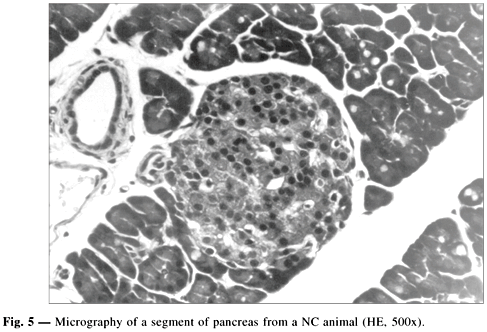To investigate the influence of the pineal gland through melatonin secretion on the physiological and morphological parameters of pancreatic islets, we studied the plasma biochemistry and morphological and morphometric characteristics of the endocrine pancreas of male Wistar rats. The animals were distributed into five groups of ten rats each: NC - normal control group; NS - sham-operated group; Px (25) - pinealectomised group, studied 15-25 days after surgery; Px (70) - pinealectomised group, studied 60-70 days after surgery; ALX - alloxan monohydrate-treated group. Data are analyzed statistically by ANOVA and by the Kruskal-Wallis test. Although there was no significant difference in plasma glucose or insulin levels between the Px (25), Px (70) and NC groups, Px (25) animals showed a tendency to increased glucose and reduced insulin levels. The ALX group showed a clear elevation of plasma glucose and a reduction of plasma insulin compared to the other groups. Morphometric analysis showed a larger pancreatic islet area and a lower pancreatic islet density in the pancreas of Px (70) animals and an increase in degenerative pathological processes in the pancreatic islets of the Px (25) and ALX groups. The present results suggest that melatonin, in addition to acting on tissue sensitivity to insulin (as reported in other studies), affects the secretory action of beta cells, as demonstrated by the morphological and morphometric changes observed in pinealectomised animals.
pinealectomy; melatonin; pancreatic islet; rat; morphology







